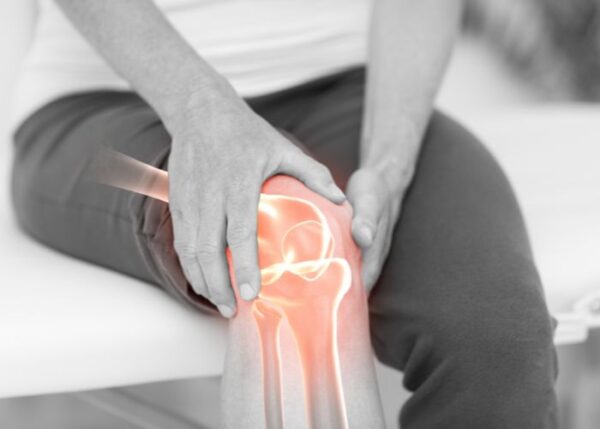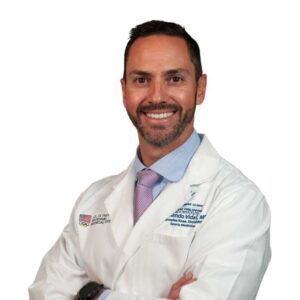What is knee arthritis?
Arthritis is the leading cause of disability among adults in the US today. It is estimated that 70 million Americans will have some form of arthritis in the next 25 years. Arthritis is a degenerative joint condition, causing pain, swelling and limited movement. Osteoarthritis is the most common type of arthritis, affecting 31 million Americans. It is characterized by the deterioration of articular cartilage. This deterioration destroys the cushion between the bones in the knee and creates a bone-on-bone condition which causes pain and loss of function.

What is Joint Preservation?
The go-to treatment for advanced osteoarthritis of the knee has always been joint replacement surgery. Total knee replacement remains one of the most successful surgeries in the history of modern medicine. One might ask – “Why should I try to preserve the joint?” Despite its widespread application – total knee replacement is not well suited for young, active patients. Many young patients do not feel that a knee replacement behaves “normally” and there is concern about early failure and need for revision surgery. Additionally, many patients have more mild cartilage damage that is amenable to restoration, thus allowing a higher degree of function and possibly delaying or preventing the need for a knee replacement altogether.
Joint preservation is not a single procedure but rather a personalized treatment strategy that considers all aspects of a patient’s injury. (See Venn Diagram below). A surgeon must have comfort with all aspects of a patient’s condition to achieve a successful and safe return to activity. Dr. Armando Vidal is renowned as a complex knee surgeon with expertise in these procedures for patients in Vail, Aspen and the surrounding Denver, Colorado communities.
Who is a candidate for joint preservation?
Joint preservation is ideally suited for a physiologically young patient with localized cartilage injury and/or meniscal deficiency (meniscus deficient from previous surgery or injury) ideally localized to one compartment of the knee. It is not indicated for diffuse bone on bone arthritis.
The Knee as an Organ
Thinking of the knee “holistically” or as an organ is the key to understanding and successfully managing knee injuries. This conceptually means that you must think of what is occurring to the cartilage, menisci, bone, ligaments, tendons and biomechanics to fully understand the context in which these injuries occur.
For example: Imagine that the cartilage at the end of your bone is like the treads on your tire. One day you notice that the treads on your tire are worn on one side but not on the other. You take your car to the shop and they offer to replace your tire without checking the alignment. What do you think the fate of your new tire will be? Regardless of how durable your new tire is – ultimately it will wear out in the same way the original one did. This is a simplification of what is going on in your knee but is an appropriate analogy. What do you think will happen if you go to see a surgeon for repair of a cartilage lesion and the underlying cause isn’t addressed? Choosing the right tire (cartilage repair technique) is critical but addressing or accounting for how you developed that lesion in the first place is just as important and, in some cases, more important.
What are joint preservation treatments?
In order to better understand options for joint preservation, you need to understand the factors that contribute to the development of these lesions. Cartilage lesions can develop in isolation but more frequently develop in the context of malalignment (usually bow legged or knock kneed), meniscal deficiency and/or instability (ACL tear, patella instability, etc). Additionally, the status and health of the subchondral bone (the bone adjacent to the cartilage lesion) is important in our decision making. This Venn diagram captures the factors that must be considered when evaluating a cartilage patient for joint preservation surgery:

What are the potential procedures that can be considered for a joint preservation procedure?
- Articular Cartilage Repair / Restoration – There are a variety of articular cartilage repair techniques. Each has its pros and cons and can be better suited for one lesion over another. Location, size and subchondral bone involvement will dictate which option is best suited to you.
- Proximal Tibial or Distal Femoral Osteotomy – Malalignment is one of the most overlooked and neglected components of a patient’s cartilage lesion. Vidal’s practice specializes in procedures to realign a knee that is misaligned. These procedures are called osteotomies. In brief, during this procedure either the tibia or the femur is cut and realigned to shift load out of the affected compartment. These procedures have been used successfully for decades and remain a work-horse in the treatment of these lesions. These procedures are highly technical but can be performed very safely and reliably in experienced hands and can be a very powerful tool in this application.
- Meniscus Transplant – Meniscal deficiency can result in loads across the cartilage surface that are 2-4 x the normal physiologic load depending on the compartment.Restoring meniscal function and decreasing load across an area of cartilage repair is critical in the setting of meniscal deficiency.
- Ligament Reconstruction – A stable knee is the foundation for joint function and homeostasis.Without a stable knee any cartilage or meniscal repair is doomed to fail. This is particularly important in the context of patella (knee cap) instability or ACL deficiency.
It is important to note that The Steadman Clinic is recognized as a world leader in the field of regenerative medicine and biologics. Although, there is much to be learned about their role in these joint preservation procedures – we are constantly innovating and bringing basic science solutions to our patients straight from our lab at the Steadman Philippon Research Institute (SPRI).
What happens after joint preservation?
Joint preservation procedures can achieve significant quality of life improvements for patients. Recovery can be a long but worthwhile investment. Adherence to the postoperative rehabilitation protocol is as critical to your success as the surgery itself and Dr. Vidal will ensure that you are paired with an experienced therapist who can optimize your outcome. Many of these procedures can require long (6-8 weeks) periods of non-weightbearing and full recovery can take as long as a year depending on the complexity of the issue. Dr. Vidal is fond of saying that this is a “marriage” and he and his team are committed to successfully and safely seeing you through the involved and nuanced recovery that these procedures demand.
Complex Knee Surgeon
Are you an athlete experiencing knee pain due to repetitive movements, frequent twisting, or other forces to the knee? You may be a candidate for joint preservation surgery. Doctor Armando Vidal performs joint preservation surgery on patients in Vail, Aspen, and the surrounding Denver, Colorado communities to help prevent later arthritis and reduce pain. Contact Dr. Vidal’s team today!

Locations
180 S Frontage Rd W
Vail, CO 81657
226 Lusher Court
Ste 101
Frisco, CO 80443
322 Beard Creek Road
Edwards, CO 81632


